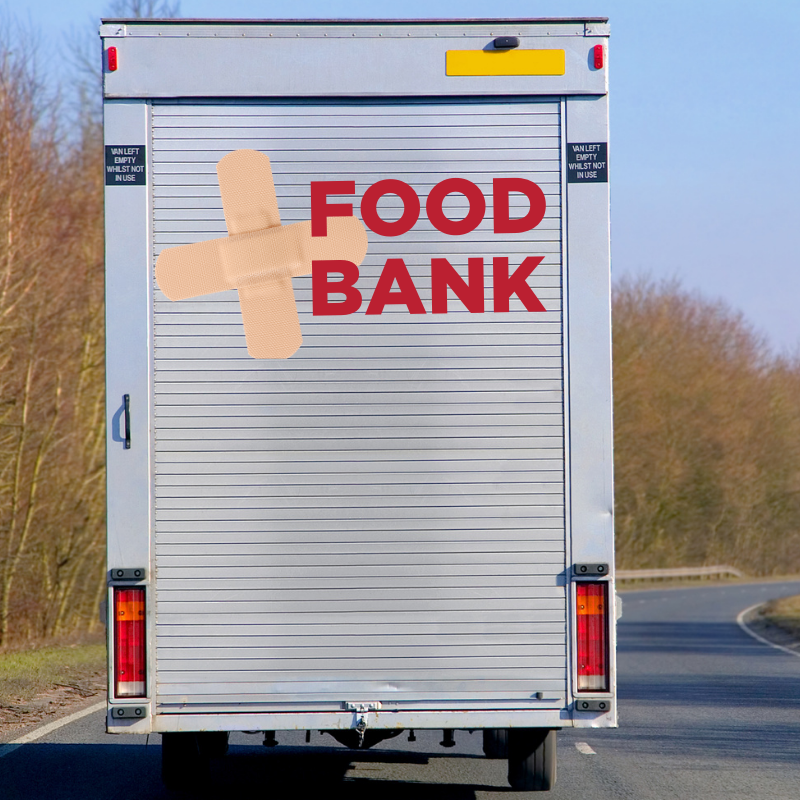It has been said that food banks are like the paramedics of social support. Think about that. Just like paramedics, food banks respond to emergencies. Food banks were a temporary measure, created in the 1980’s to respond to poverty and hunger in a time of economic crisis.
It is an interesting correlation. The word paramedic comes from two words – ‘para’ meaning along-side and ‘medic’ meaning doctor.
Food banks were created as a stop-gap measure. They were there to help people keep their heads above water as they navigated unforeseen circumstances impacting their lives. This was meant to be done alongside good public policy and robust social support programs; they were never intended to cure ongoing food insecurity needs.
It is no surprise then, that as food banks are experiencing the sixth consecutive year of growth in visits, the expectations and increased need in our province is beginning to surpass the capacity of the food bank network.
Just as we see mounting pressures in healthcare changing the role of paramedics from providing life-saving emergency interventions to managing long-term conditions, acute presentations of mental health concerns, and a range of urgent care needs, unfortunately food banks are being relied on more and more to fill gaps created by government budget cuts and employer cost cutting.
Why food banks were created
Feed Ontario was founded 30 years ago by twelve food banks wanting to build a united front against hunger. Feed Ontario set out to support local food banks in providing essential services to their communities and to advocate for strong policies that would eliminate food insecurity and poverty in Ontario. Food banks were a temporary measure.
Beginning with the recession in the early 1990’s and through the global financial crisis in 2008, natural disasters, the COVID-19 pandemic, and now as our province experiences unprecedent inflation, Ontarians have faced several emergencies over the past 30 years.
Feed Ontario’s network of 1,200 hunger-relief organizations have been invaluable in their willingness to navigate impossible odds, however they were only ever intended to provide temporary emergency assistance.
How food banks can, and do, serve their communities
The Ontario food bank network provides nutritious food support and programing that helps alleviate immediate hunger needs. In addition, many food banks offer income support programs, like rent subsidies. They also advocate on behalf of those they serve at the municipal, provincial, and federal level for evidence-based solutions to poverty.
Food banks are a beacon in their communities through unprecedented challenges, ever exhibiting innovation and agility. They quickly adapt services, ensuring they are there to help their communities.
Over 90 per cent of food banks provide services beyond emergency food support. Services can include holiday hampers, home delivery, school supplies, and income tax preparation.
As the financial health of Ontarians declines, food bank use is escalating, and food banks are becoming increasingly relied on to fill gaps in the social safety net and subsidize government policy changes, budget cuts, and inadequate social support programs.
As food banks experienced a 42 per cent increase in visits over the last three years, there is a concern that the growing need and reliance on food banks in the province will outpace the capacity of the provincial food bank network.
What food banks can’t (and shouldn’t have to) do
Food banks can’t lift people out of poverty. The demands being placed on food banks now reach far beyond emergency response. They have effectively become a second tier of the social safety net. Food banks are being relied on to catch all the people who have fallen through the cracks when other systems have failed.
Food banks excel at helping people during times of crisis and ensuring that families who need support are helped. While food banks will continue to distribute food and provide ongoing support to fill the gaps, they will never be the solution to food insecurity. Intentional action needs to be taken to move the needle poverty. Only this will ensure all Ontarians have access to all their basic needs.
Where do we go from here
It continues to be harder to escape poverty than it was 30 years ago. This comes as Ontario’s labour market is weakening and social assistance programs are not keeping pace with rising costs. All the while, housing and other necessities are becoming more and more unaffordable.
While Feed Ontario and the provincial food bank network will continue to distribute food and provide ongoing support to the full extent of its ability, food banks cannot reduce poverty. The only solution lies in good public policies that ensure Ontarians have access to sufficient income.
The Government of Ontario needs to take immediate action to:
- Ensure all workers have access to protections under the Employment Standards Act, Employment Insurance, and the Canada Pension Plan.
- Close the gap on poverty by increasing social assistance rates to a basic standard of living.
- Make housing affordable so people don’t have to choose between paying rent or buying food.
- Put people with lived experience at the centre of policy and program design.
Like paramedics to the medical system, food banks were a temporary measure. Unfortunately, they have become a second tier of the social safety net. Food banks are relied on to catch people who have fallen through the cracks when other systems have failed.
The proper government action can ensure Ontarian’s have access to the income they need to meet their basic needs. Then food banks can focus on providing the emergency support they were intended for.
